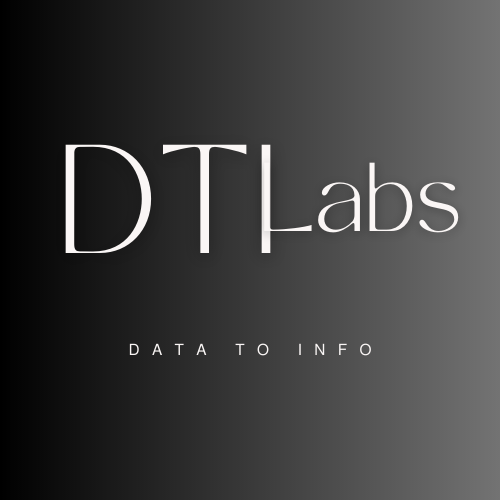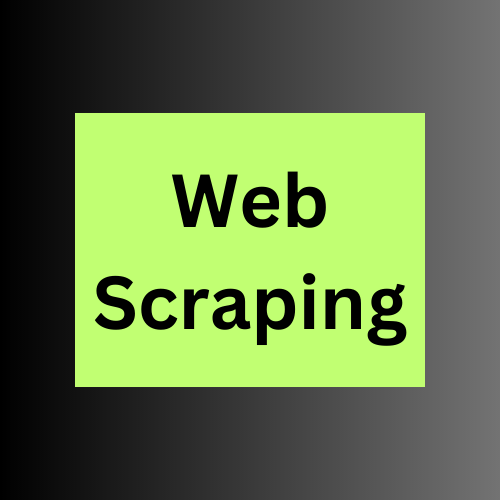In the vast landscape of the Internet, data is abundant and ever-growing. Web scraping, a technique used to extract information from websites, has emerged as a powerful tool to collect, analyze, and utilize this wealth of data. Whether you’re a researcher, a business professional, or a curious individual, web scraping opens up a world of possibilities by providing access to valuable information that can drive insights, innovation, and informed decision-making.

What is Web Scraping?
Web scraping refers to the automated process of extracting data from websites. It involves using specialized software or programming tools to navigate web pages, parse their content, and retrieve the desired data. The extracted data can include text, images, tables, product details, contact information, and much more, depending on the purpose and scope of the scraping project.
Tools and Techniques
Several tools and techniques are employed in web scraping, each offering its unique advantages and flexibility. Here are some commonly used ones:
- Programming Languages: Popular programming languages such as Python, Java, and Ruby offer libraries and frameworks (e.g., BeautifulSoup, Scrapy) specifically designed for web scraping. These libraries provide functions and methods to fetch web pages, extract data, and handle complex scraping tasks.
- Scraping Frameworks: Frameworks like Scrapy provide a higher-level structure for building web scrapers. They offer features like automatic web page navigation, request throttling, and data processing pipelines, simplifying the scraping process and making it more efficient.
- Headless Browsers: Tools like Puppeteer and Selenium allow scraping websites that heavily rely on JavaScript for dynamic content. They simulate user interaction with the web page, rendering JavaScript, and enabling extraction of data that might not be readily available in the page source.
- APIs: Some websites offer APIs (Application Programming Interfaces) that allow developers to access and retrieve data in a structured format without the need for scraping. APIs provide a more reliable and structured way of obtaining data, but they might have limitations or require authentication.
Legal and Ethical Considerations
While web scraping offers numerous benefits, it’s crucial to approach it responsibly and adhere to legal and ethical guidelines. Here are some important considerations:
- Terms of Service: Websites often have terms of service or usage policies that outline whether scraping is allowed or prohibited. It’s essential to review these terms before initiating any scraping activity to ensure compliance and avoid potential legal issues.
- Respectful Crawling: It’s important to be mindful of the impact your scraping activity can have on the target website’s performance. Excessive requests or aggressive crawling can strain server resources, leading to disruptions or server overloads. Practicing respectful crawling involves setting appropriate scraping intervals, limiting the number of concurrent requests, and respecting the website’s robots.txt file.
- Data Privacy and Copyright: Scraping should be carried out in a manner that respects data privacy laws and copyright restrictions. Avoid scraping personal or sensitive information without proper consent, and be cautious when scraping copyrighted content.
Simple Demo Example using beautifulsoup4:
import requests
from bs4 import BeautifulSoup
# Send a GET request to the webpage you want to scrape
url = "https://example.com"
response = requests.get(url)
# Create a BeautifulSoup object by passing the HTML content and specifying the parser
soup = BeautifulSoup(response.content, "html.parser")
# Find and extract specific elements from the webpage
title = soup.find("h1").text
paragraphs = soup.find_all("p")
# Print the extracted data
print("Title:", title)
print("Paragraphs:")
for p in paragraphs:
print(p.text)
In this example, we start by importing the necessary libraries: requests for sending HTTP requests and BeautifulSoup for parsing the HTML content.
Next, we send a GET request to the target webpage by providing its URL. The response from the server is stored in the response variable.
We then create a BeautifulSoup object, soup, by passing the response.content and specifying the parser (in this case, “html.parser”).
To extract specific elements, we use the find and find_all methods provided by BeautifulSoup. In this example, we find the first h1 tag to extract the title, and we find all p tags to extract the paragraphs.
Finally, we print the extracted data, which includes the title and the text content of each paragraph.
Note: Make sure to install the requests and beautifulsoup4 libraries before running the code. You can use pip install requests beautifulsoup4 to install them. Additionally, replace the URL in the url variable with the desired webpage you want to scrape.
Applications of Web Scraping
Web scraping has a wide range of applications across various industries and domains:
- Market Research: Companies can scrape competitor websites to gather pricing data, product details, and customer reviews, helping them make informed decisions and stay competitive in the market.
- Lead Generation: Web scraping enables businesses to extract contact information from websites, social media platforms, or online directories, facilitating lead generation for marketing campaigns.
- Content Aggregation: News aggregators and content platforms can utilize web scraping to collect articles, blog posts, or other relevant content from various sources, providing users with a consolidated and curated information experience.
- Financial Analysis: Web scraping allows financial analysts and investors to collect data from financial websites, stock exchanges, or economic indicators, enabling them to perform in-depth analysis, monitor trends, and make data-driven investment decisions.
- Research and Academia: Researchers can leverage web scraping to gather large-scale data for analysis, monitor social media trends, or collect scientific data for academic studies.
Challenges and Best Practices
Web scraping is not without its challenges. Websites may employ techniques like CAPTCHAs, IP blocking, or dynamic content rendering to deter or prevent scraping. To overcome these challenges, it is important to follow some best practices:
- Respect Robots.txt: The robots.txt file is a standard mechanism for websites to communicate their scraping guidelines. It’s essential to honor the directives mentioned in this file and avoid scraping restricted areas.
- IP Rotation and Proxies: To prevent IP blocking, rotating IP addresses or using proxy servers can help distribute scraping requests and avoid detection.
- Handling Dynamic Content: Websites that rely heavily on JavaScript may require using headless browsers or waiting for AJAX requests to complete before extracting data effectively.
- Data Cleaning and Quality Assurance: The extracted data may require cleaning and validation to ensure accuracy and reliability. Removing duplicate entries, handling missing values, and verifying data consistency are important steps in the data cleaning process.
Conclusion:
Web scraping has become an invaluable technique for extracting data from websites, providing opportunities for businesses, researchers, and individuals to harness the power of information. However, it is essential to approach web scraping responsibly, respecting legal and ethical boundaries. By employing the right tools, techniques, and best practices, web scraping can unlock a world of possibilities, enabling data-driven insights, innovation, and progress in diverse fields across the digital landscape.
Also check out Data Science related content:
Link: Data Science
Check out Youtube channel:
Link: Youtube

